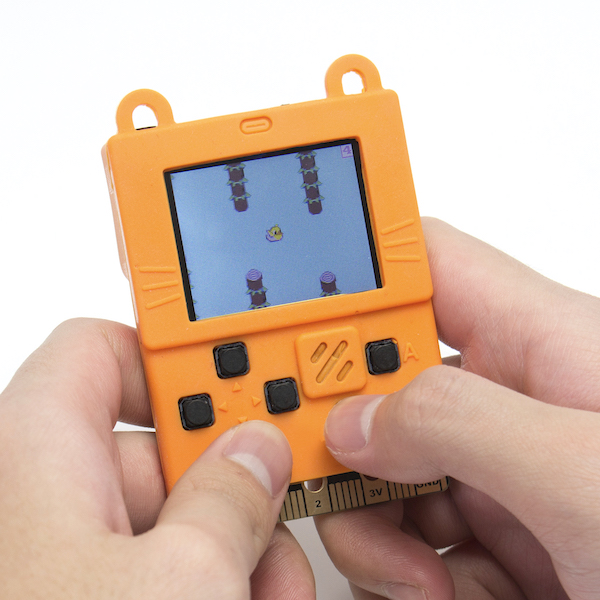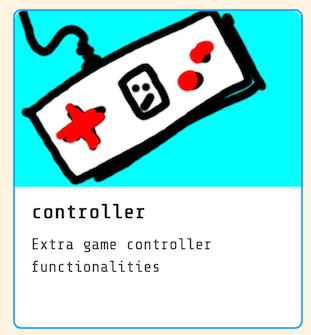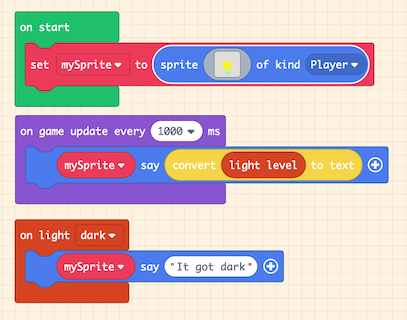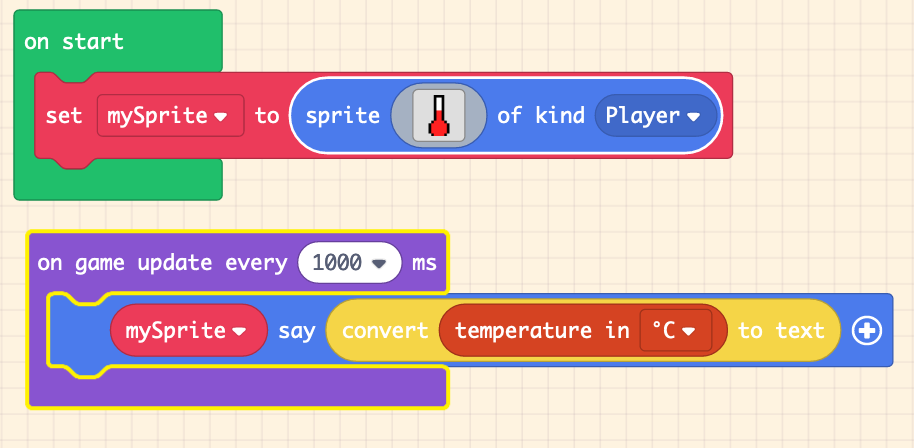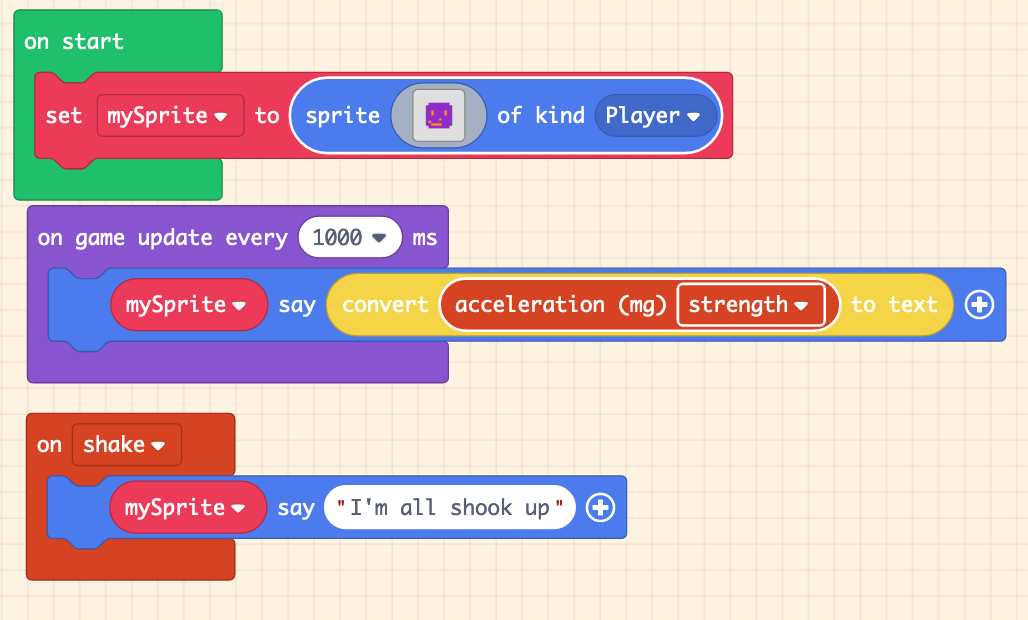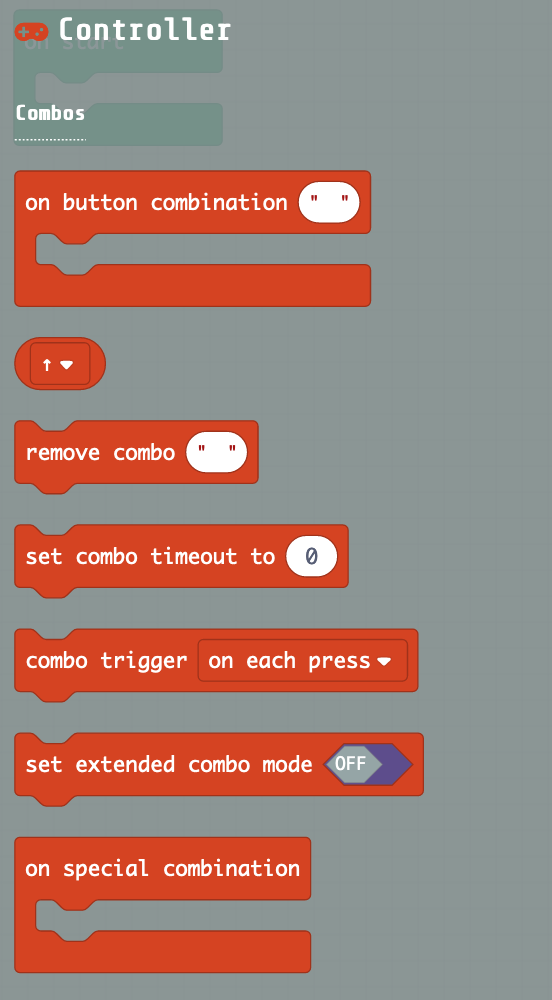Bonus docs for using MakeCode Arcade with the MeowBit
The MeowBit is a little gameboy like device that you can program using MakeCode Arcade, Python, or KittenBot's version of Scratch. It has buttons, several sensors, can run on a battery, and you can make your own games for it through the web. This repo will cover everything I've learned about using it with MakeCode Arcade. I don't plan to cover Python or Scratch. (yet)
You can buy the MeowBit from KittenBot's website or one of several resellers. I got ours from Adafruit.
First you should learn MakeCode Arcade, which does not require any hardware at all to use, and can work with several different devices. Once you've created a program you can click the download button in your projects to compile it into a .uf2 file. This is the actual binary that goes on your device. Plug your MeowBit into your computer using USB. It should automatically mount as a flash drive. Drag the downloaded .uf2 file to the drive. The MeowBit will automatically disconnect and load the game. It's that easy.
The MakeCode Arcade lessons are great for learning how to code and build games. I went through the CS Intro 1 course with my 8yr old kid and he loved it. He's now making fun little games all by himself. The courses cover using events, logic, loops, animating sprites, creating a tilemap, and simple audio.
I found very little specific to using MeowBit with MakeCode arcade, in particular the sensors. So that's what I'm covering here.
The MeowBit has built in sensors for light, temperature, and a gyroscope/accelerometer. You can use them with the Controller extension. This extension will give you extra blocks in the 'Controller' category.
The built in light sensor is just below the switch in the top center of the MeowBit screen. The light value is a number between 0 and 255. There are blocks to:
- get the current light level with the
light levelblock. - detect light level changes with the
on light [dark]block.
This example creates a lightbulb sprite. Every second it makes the sprite say the current light level. If the light becomes dark then it says 'It got dark'.
The temp sensor works similarly to the light sensor. On the MeowBit the physical sensor is near the D-pad. The sensor is not very accurate and is probably skewed by having the silicon case on it, but it should be enough for simple tests. Add the same Controller extension to get the temp sensor blocks.
- get the current temp as Fahrenheit or Celsius.
The example below shows the current temp once a second.
The gyroscope can also be accessed from the Controller extension. There are two blocks which do:
on shake, called whenever the meowbit is physically shaken. You can change the event to look for tilt left, tilt right, etc, as well as the general strength in terms of gravity. This could be useful for detecting when the Meowbit is dropped or hit.acceleration, to get the current value of the sensor. You can get the x, y, z or strength (which I think is an average). The acceleration is a value from -1024 to +1024 for each direction.- When you add any code which uses the gyro the simulator will get a new tilt ability. Just move your mouse over the simulator to 'tilt' it in different directions. Great for quickly testing out your code.
- There is an extension called button-combos. It lets you work with sequences of button presses. I've only
used the
on button combinationblock so far, but there are many other blocks.
Here's an example that shows a hamburger when the player presses the Konami Code.
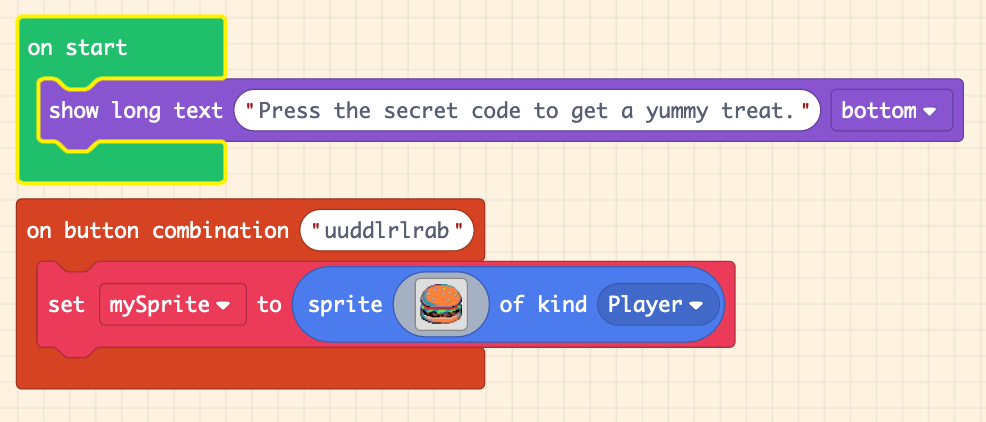 live example
live example
MakeCode Arcade has blocks to play pre-designed sounds or a short melody you define. However, the Javascript API has a much richer API, documented here. Essentially you make a string with commands for different notes. For example, the following code:
"C4:1, D4:2, R:3"Would play middle C for one beat, D for two beats, then rest for three beats.
You can also adjust the type of synth used to generate the music. You can change the waveform type and the ADSR envelope like this:
"~2, @50,50,100,0"Sets to waveform 2 (sawtooth), with attack=50ms, decay=50ms, sustain volume to 100 (out of 255) and release to 0ms.
The challenge is that you can't use these on the blocks side. If you type them in on the JS side then switch back it will complain that you have invalid code. I found a trick though. If you split your strings up and add them together, the blocks side will turn it into a joined array of strings.
I also discovered that while audio normally plays in the foreground and will have to complete before the next block is executed, you can actually get background music by put it inside of a forever block. This will run the audio in a different thread.
There are two ways to do multi-player with the MeowBit. First, you can have each user use different buttons on the same device. This is will be annoying on the MeowBit since both of you will be trying to hold the device. For turn based games you could hand it back and forth. The Battleship-like Salvo game by AlexK does this.
The other way is by physically connecting two MeowBits. They have what appears to be a headphone jack. It is not! In fact, do not plug in real headphones. It might fry them.
This connector is for the JACDAC connection, which is a new protocol to send information between multiple devices over a single wire. The JACDAC blocks handle this. In practice the code seems to be very alpha and doesn't work very well. My son was able to create a little example that sends a hard coded message from one MeowBit to another, but the sending didn't work every time. Sometimes we had to send a message multiple times before it was received. I'm not going to put an example here until the code is more stable.
The MeowBit has a full size SD Card slot which, according to the docs, is for store programs or extend wireless modules). I have found no documentation on how to use it, or indication that it works at all. I sent an email to the MeowBit manufacturers to see if it was ever turned on. For now I assume it does not do anything.
The Pins module (also called 20 Pin Edge Connector) has poor documentation.
You can turn on one of the LEDs with the Pins module, but it's so dim that it doesn't show through the silicon case.
There is also a MeowBit specific extension here but it has not been updated in 11 months. Also, it doesn't seem to do anything that the Pins module couldn't do, so I'd stick with Pins.
Under the Advanced Image category are blocks to draw rectangles, lines, and pixels to an picture.
There are not any blocks for drawing text. The current recommendation from the Make Code team is to
either use a 3rd party extension the one in
this forum thread, or create an empty
sprite and use the say block.
MakeCode Arcade has extensions to let your device pretend to be a mouse or keyboard . When connected to your computer your device can type keys or move the mouse. This is called a HID device. As far as I can tell HID device mode does not work on the MeowBit. Even just having the extension installed in my code caused the MeowBit to not load the app.
